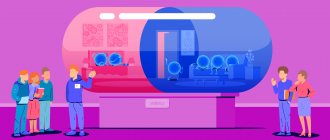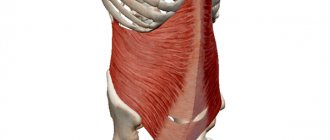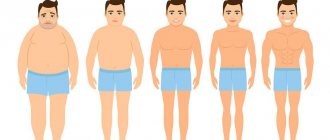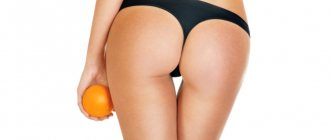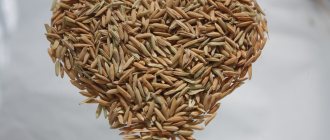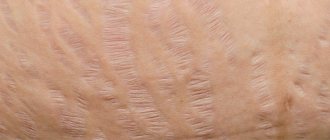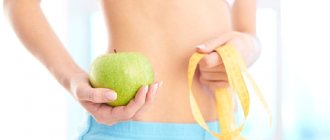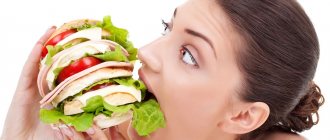Flatulence is a common condition in adults. According to statistics, at least 40% of people who consult a gastroenterologist complain of constant increased gas formation, and up to 100% of people have experienced it at least once in their lives. In the absence of diseases of the gastrointestinal tract, flatulence in adults does not pose a serious threat to health, but it significantly reduces the quality of life and causes a lot of inconvenience.
There are three sources of gas in the intestines:
- air swallowed during eating, talking, smoking;
- formation of gases in the intestinal lumen, including production by intestinal bacteria;
- gases entering the intestines from the blood.
Normally, about 200 ml of gas is present in the gastrointestinal tract at a time. During the day, more than 20 liters are formed, and most of the gases are destroyed and absorbed through the intestinal walls. The exceptions are nitrogen and hydrogen sulfide - they are removed only through the rectum. With flatulence, the volume of gas becomes larger, which causes serious discomfort to the person.
Causes of increased gas formation
Excessive gas formation can be due to a variety of reasons. One of them is the imperfection of the enzyme system or disruption of its function, which is more typical for children in the first days of life. Researchers Yazenok and Zhelnova (Yazenok N.S., Zhelnova T.I., Bondarenko N.V., Novokshenova T.P., Kirsanova A.I., 2003, p. 16). In this case, the following causes of flatulence are distinguished:
- unbalanced diet;
- diseases of the upper gastrointestinal tract: duodenitis, gastritis;
- diseases of the liver and gall bladder: hepatitis of any origin, cholecystitis, etc.
Other mechanisms for the development of the disease include imbalances in the microflora of the colon. With them, carbohydrates and proteins that come with food are not completely absorbed by the mucous membrane. Normally, dietary fiber from fruits and vegetables, especially legumes and coarse-fiber fruits, is broken down by intestinal bacteria. The result of their vital activity is the formation of a large volume of gases. A significant portion of gases is absorbed by aerobic intestinal bacteria. And with dysbacteriosis, the balance between bacteria producing and consuming gases is disrupted. However, it is important to remember that even in the absence of microflora imbalance, a special diet can cause the formation and release of large amounts of gases. A diet based on foods rich in cellulose and beans can cause flatulence. Other products that increase gas formation include soda, lamb meat, as well as products in which fermentation and fermentation processes are already occurring, for example, kvass.
Another mechanism for the development of flatulence is intestinal distension due to paresis. This is due to abdominal surgeries performed. In this case, the cause of flatulence in adults is the very fact of the intervention. After it, intestinal motility slows down, and this leads to fermentation and putrefactive processes. The condition is accompanied by spasmodic pain because gases accumulate in the intestinal lumen.
A common cause of increased gas formation is emotional stress, nervous disorders and shocks. The mechanism of development of this syndrome is explained by spasm of smooth muscles, including the intestines, and a slowdown in peristalsis.
Causes of bloating
Flatulence, as this condition is otherwise called, can occur for a number of reasons, many of which are quite serious. Bloating and gas formation occur due to the presence of:
- chronic pancreatitis - acute lack of nutritional enzymes produced by the pancreas. Since there is nothing to digest the food, it accumulates in the stomach, creating a feeling of heaviness and bloating after eating;
- Irritable bowel syndrome – a person experiences bloating and abdominal pain due to changes in bowel movements;
- dysbiosis - a disease characterized by problems in the microflora, due to which pathogenic microorganisms located on the walls of the mucous membrane begin to produce gases that interfere with the full functioning of the gastrointestinal tract;
- individual lactose intolerance - the diagnosis is also associated with enzyme deficiency: the patient does not have enough milk sugar, which contributes to the complete absorption of lactose. In the presence of this syndrome, intestinal flatulence can occur at any age, but it is most often diagnosed before the age of 5-8 months;
- Intestinal obstruction is a fairly serious disease that can be diagnosed early. In this case, flatulence is associated with the growth of polyps or the formation of a tumor in the intestinal area. In most cases, surgery is required;
- Celiac disease is an extremely rare disease, but it does occur. According to statistics, in our country only 1 person out of 1000 is affected by it. Celiac disease is associated with a partial or absolute inability to break down gluten, as a result of which toxic compounds are created in the body that negatively affect the surface of the intestines. If a patient is diagnosed with this, then, first of all, he is prescribed a diet for flatulence, based on the complete exclusion of gluten from the diet. This includes sausages and sausages, barley. Wheat, rye, oatmeal, pasta made from regular flour, baked goods, ready-made sweets, store-bought yoghurts and curds, etc. A gastroenterologist may also prescribe enzymatic medications designed to break down gluten that enters the body.
Often, one of the reasons that provokes bloating is poor nutrition and abuse of foods that do not bring any benefit to the body.
- Frequent consumption of various carbonated drinks such as Coca-Cola and sparkling mineral water. Bloating in the lower abdomen that occurs for this reason, as a rule, goes away on its own and quite quickly: gases are absorbed into the body through the intestinal walls and then removed from it without additional help.
- Too large portions of food. Nutritionists around the world categorically do not recommend eating huge portions. Hastily eating food, quickly swallowing it instead of chewing it normally, is harmful to the digestion process. Abdominal bloating and gas formation that arise for this reason require a simple treatment - just change your approach to nutrition.
- An abundance of foods in the diet that cause fermentation, which, in turn, stimulates bloating and gas formation in an adult or child. The solution to this problem is not difficult: it is necessary to limit the consumption of sweets, baked goods, legumes, potatoes and other foods known for their content of starch and fast carbohydrates.
- Eating foods that are incompatible with each other. For example, any fruits should be separated from the main meal: eat them about 1 hour before or 2 hours after breakfast, lunch or dinner.
Types of flatulence
Intestinal flatulence can be of several types depending on the causes:
- nutritional – associated with dietary disorders;
- digestive - appears when abdominal digestion is disrupted (with cholelithiasis, gastritis, inflammation of the pancreas, etc.);
- dysbiotic - formed as a result of excessive bacterial growth of the small intestine and/or imbalance of the microflora of the large intestine;
- mechanical - occurs due to a mechanical obstacle to the evacuation of feces and gases (with narrowing of the intestinal lumen, tumor, adhesive disease);
- dynamic - is the result of disturbances in intestinal motor activity (with dyskinesia, acute infection, poisoning);
- circulatory - develops when the blood supply to tissues is disrupted (for example, with ischemic colitis);
- psychogenic - appears in connection with a psycho-emotional state, neuropsychic disorder;
- high altitude - occurs when you rise to a height, gases expand, and pressure in the intestines increases.
Thus, the causes of the disorder can be either minor dietary disturbances or flights, or serious intestinal diseases. A doctor will help you figure this out.
Basic Rules
The objectives of the diet for flatulence are:
- providing adequate nutrition;
- normalization of intestinal motor function;
- reducing the processes of inflammation, fermentation and putrefaction in the colon;
- exclusion of foods to which the patient has food intolerance;
- restoration of normal intestinal microflora.
First of all, therapeutic nutrition is aimed at combating putrefactive and fermentative diarrhea, during which gas formation increases.
According to the classification of treatment tables according to Pevzner, the diet for flatulence corresponds to table No. 5. But in each case, therapeutic nutrition is prescribed individually, taking into account the physiological characteristics of the patient and the presence of concomitant diseases of the digestive tract.
Daily nutrient content in the diet for flatulence:
- proteins – 110-120g
- fats – 50g;
- carbohydrates – up to 200g, especially limit simple sugars.
The energy value of the diet is reduced and amounts to 1600 kilocalories.
Principles of nutrition for flatulence:
Rules for eating
- Each meal should take place in a calm environment, snacking “on the run” is excluded. Food must be chewed thoroughly and not talking while eating: this prevents, firstly, swallowing air (aerophagia), and, secondly, reduces the load on the digestive tract.
- In addition, if you have flatulence, it is not recommended to drink during meals.
- You should also observe the hours of eating, this sets the gastrointestinal tract to work harder at certain times and prevents the production of gastric juice, pancreatic enzymes and bile acids at inopportune hours, preventing the development of complications in the gastrointestinal tract.
- It is worth giving up chewing gum: it causes aerophagia and increases the secretion of gastric juice.
Regime: Meals should be fractional, up to 5-6 times a day, in small portions. Due to frequent meals, nutrients are promptly broken down in the intestines and absorbed, and residual dietary fiber is immediately evacuated, which prevents their rotting and fermentation.
Temperature of food: Food should be served warm, hot and cold foods should be avoided as they increase the secretion of stomach and pancreatic juices, which contributes to intestinal irritation.
Combination of products: It is necessary to have an understanding of mutually exclusive products (salty and sweet, vegetable fiber and milk). Their combined use leads to increased load on the digestive tract, increased intestinal motility, and also the occurrence of fermentation processes.
Culinary treatment: Therapeutic nutrition for flatulence is designed to provide mechanical and chemical sparing of the gastrointestinal tract. Therefore, dishes are served boiled, stewed, baked or steamed.
Salt and liquid: The content of table salt in dishes is somewhat limited: up to 6-8 grams, so as not to irritate the stomach and intestines. Fluid consumption should reach at least two liters per day: this ensures timely evacuation of feces, preventing fermentation.
Symptoms of flatulence
Flatulence may be accompanied by pain in various parts of the abdomen, bloating, a feeling of fullness, and a false urge to defecate. The severity of the pain varies depending on the volume of gases, the degree of stretching of the intestinal walls due to the accumulation of gases. Doctors Pakhomovskaya and Venediktova in their work point out that “the intensity of abdominal pain depends not only on the amount of accumulated gases, but also on the level of the threshold of visceral pain sensitivity” (Pakhomovskaya N.L., Venediktova M.M., 2021, p. 34). This means that the reaction can be individual. Much depends on whether a person had colic in infancy. It is known that when they are present, functional pain occurs more often in adulthood.
Flatulence in adults may be accompanied by other manifestations:
- nausea;
- belching;
- bowel disorders;
- decreased appetite;
- irritability, etc.
Doctors conventionally divide flatulence into two variants of manifestation. In the first case, the main symptom is an increase in abdominal volume, that is, bloating. In this case, normal passage of gases does not occur due to spasm of the colon.
In the second option, the passage of gas is violent and frequent, and the pain is not expressed. Patients complain of a characteristic rumbling in the stomach, a feeling of “rolling” in the intestines.
Pain can occur in one area or throughout the entire abdomen. The local nature of the discomfort is associated with the accumulation of gases in a certain part of the intestine, usually in the area of the cecum. They are not necessarily associated with episodes of eating or exercise. Extraintestinal symptoms also rarely occur: burning in the chest, tachycardia, weakness, sleep disturbances.
Bloating has one cause - overeating or the “wrong” foods.
Yes, the lion's share of stomach troubles comes from too much food, when the enzymes have to work hard to digest it all. If a person divides 3 usual meals into 6, adding snacks, then the volume of food in a single serving will be much smaller, and the intestines will absorb it without straining.
However, in addition to overeating, the sensation of rumbling, transfusion, and bloating may be a consequence of the fact that the pancreas produces less enzymes than necessary. Therefore, even a normal amount of food will cause similar symptoms. Or the intestines themselves are “deficient” in enzymes. For example, lactase deficiency, or milk intolerance, often develops in older people - they suddenly discover that their stomach “behaves badly” when consuming dairy products.
Question answer
Why does my stomach growl? Additionally, persistent bloating may be a sign of small intestinal bacterial overgrowth. An imbalance of microorganisms can lead to abdominal discomfort. Any food eaten interacts with microorganisms before entering the bloodstream. And the products of their activity are the accumulation of gases, which can cause a feeling of “bloating.”
In any case, when something in the stomach changes and does not recover quickly, it makes sense to consult a specialist so that he can assess how dangerous these changes are. The doctor can prescribe a number of tests that clarify this situation. The level of pancreatic enzymes will be shown by a stool test for pancreatic elastase. To understand whether bacteria are “to blame” for your troubles, a hydrogen-methane breath test with lactulose is performed.
Features of nutrition during flatulence
The first step in the treatment of intestinal flatulence for any reason is diet correction. It is important to completely avoid foods that stimulate increased gas formation:
- legumes: beans and peas, lentils;
- products rich in cellulose, coarse fiber, essential oils: sorrel, garlic, onions, radishes, gooseberries, dates, etc.;
- products that cause fermentation processes: kvass, black bread, grapes (including raisins);
- alcohol and soda;
- whole milk.
You should also stop chewing gum and smoking or limit the number of cigarettes you smoke.
There are dishes that can be consumed, but in smaller quantities. So, Gureev o (Gureev A.N., 2010, p. 306).
The diet should be based on fermented milk products, buckwheat and millet porridge, low-fat varieties of fish, meat and poultry. It is better to steam or boil food. It is important to choose bread made from wholemeal wheat flour. Vegetables and fruits should be consumed baked or boiled.
What can you eat if you have acute diseases of the gastrointestinal tract?
List of allowed products for gastrointestinal diseases:
- Bread : protein-wheat
, wheat loaf, dried (yesterday's) - biscuit dry cookies or buns (not buttery), pies with potatoes, apples, or cheesecakes.
- Milk: see if your stomach tolerates it well. The same applies to fermented milk drinks and curd dishes: souffles, puddings or “balls”.
- Eggs: up to 1 pc. in a day.
- Fats: If your doctor approves the introduction of butter into your diet, great! As part of this diet, you can put 10 g of butter in your favorite dish or just eat a sandwich in the morning. Frying food in butter is strictly prohibited.
- “First” courses: puree soup, which can be prepared with water or a very weak and always low-fat broth. Chop the permitted vegetables into smaller pieces, add a little rice, buckwheat, oatmeal or small pasta like “stars” to the saucepan - tasty and nutritious.
- Meat and poultry: lean varieties and cooked in minced form. Cutlets or meatballs, soufflés or quenelles, rolls made from lean parts of beef, veal, rabbit or chicken - all this can become the highlight of even a festive dinner.
- Fish: cook chopped, make juicy meatballs, cutlets or meatballs. But it is not forbidden to cook it in pieces, but you need to choose a low-fat type: hake, pollock, pike, cod, haddock or ice fish.
- vegetable diet with potatoes, pumpkin, zucchini and carrots, pre-boiled and thoroughly pureed.
- Cereals, pasta. Avoid barley and millet, which still remain an unbearable burden for an irritated stomach. Any porridge should be boiled in water, or better yet, boiled to a viscous, tender mass, but not hard.
- Fruits and berries: choose only very sweet and certainly soft ones, without hard skin, make sure that they are ripe without any “buts”. Plums, melons and apricots should be avoided. Tasty tip: baked apple mousse is a great snack during this diet.
- Drinks: prepare fruit jelly or make compote from pureed sweet fruits and berries, you can steam rose hips or drink natural tea, for example, black tea with milk (unless your doctor has forbidden you milk).
- Sauces, spices: aromatic dill and parsley (greens need to be chopped), laurel. You can also prepare the most delicate sauces: sour cream or milk, they will add a new note to even a boring dish.
Lifestyle change
In the treatment of flatulence, daily routine and healthy habits are important. It is necessary to increase the frequency of meals, up to 5-6 times a day. Breakfast should consist of cereals.
It is important that each meal is calm; there is no need to talk during lunch. Try to chew your food thoroughly and take your time—allow enough time for lunch and snacks during the day. You should also not eat food while lying down. It is better to avoid drinking drinks through a straw or sucking on caramel.
A sufficient amount of water is important in the fight against stool disorders and the formation of large amounts of gas. Researcher Shulpekova in her scientific work points out that “sufficient fluid intake is up to 2–2.5 l/day. helps soften feces and diffusion of gases into the bloodstream” (Shulpekova Yu. O., 2013, p. 57).
You can help yourself with a food diary. Record the foods you eat and your feelings in it. This way you can understand which foods make your symptoms worse.
Drug treatment
Treatment of flatulence in adults may include a number of medications:
- enzyme preparations;
- choleretic drugs;
- probiotics and prebiotics;
- antispasmodics and prokinetics, etc.
Enzyme replacement therapy can help reduce symptoms if they are caused by enzyme deficiency or pancreatic disease. Choleretic agents increase the volume of bile in the intestine, which promotes normal motility in diseases of the hepatobiliary system.
Restoring the normal balance of microflora is an important factor in the treatment and prevention of flatulence. The doctor may prescribe prebiotics, probiotics or synbiotics containing lactobacilli. They have been proven to suppress excess gas formation.
Intestinal motor disorders can be eliminated with the help of prokinetics or antispasmodics. Such prescriptions require careful examination; drugs have certain restrictions and are prescribed according to indications.
Treatment of flatulence that develops as a result of poor nutrition may involve only symptomatic therapy. Adsorbents are able to bind gases in the intestines and reduce their volume, relieving unpleasant symptoms. It is important to understand that some sorbents can cause stool retention, so you should be careful when choosing a drug.
"Fitomucil Sorbent Forte" is a drug that can be recommended for flatulence. This is a natural sorbent, the action of which is complemented by a complex of probiotics in the composition. The product works due to dietary fiber - the shell of plantain seeds: it absorbs toxins, excess liquid and gases, and helps reduce gas formation in the intestines. Inulin in Fitomucil Sorbent has a probiotic effect and stimulates the growth of beneficial microflora. A complex of living probiotic bacteria has a beneficial effect on digestion. One of the indications for the use of the drug is post-infectious digestive disorders in the form of diarrhea, flatulence, and unstable stool.
Treatment for bloating
Abdominal bloating requires complex treatment, since it is necessary to eliminate not only the annoying symptom, but also the cause, otherwise the situation will repeat itself.
Any appointments must be made by a specialist - a gastroenterologist or therapist. As a rule, the standard regimen always includes taking enterosorbents, which allow the gases accumulated in it to be removed from the body as soon as possible. Since these drugs cannot independently distinguish harmful compounds from beneficial ones, they cannot be taken for a long time.
Depending on the patient’s medical history and the causes of bloating in the abdomen and intestines, non-toxic defoamers, used even at a very young age, enzymatic agents, and probiotics that restore damaged intestinal microflora may be prescribed. The specialist will also definitely recommend sticking to a diet for some time that does not burden the gastrointestinal tract.
It is very important to find the cause as quickly as possible in order to quickly alleviate the patient’s condition. Therefore, it is necessary to contact only experienced therapists and gastroenterologists. These are exactly the kind you will meet within the walls of JSC “Medicine” (academician Roitberg’s clinic) - a multifunctional medical center located in the very center of Moscow. The building is located at 2nd Tverskoy-Yamskaya Lane, building 10, next to the Mayakovskaya metro station.
Here they will quickly select a medicine for bloating that will specifically solve your cause, since the main principle of this clinic is an attentive and individual approach to each patient.
You can make an appointment for consultation, diagnosis and treatment by calling 24/7 +7 (495) 775-73-60 or using the feedback form on the medical center website.

